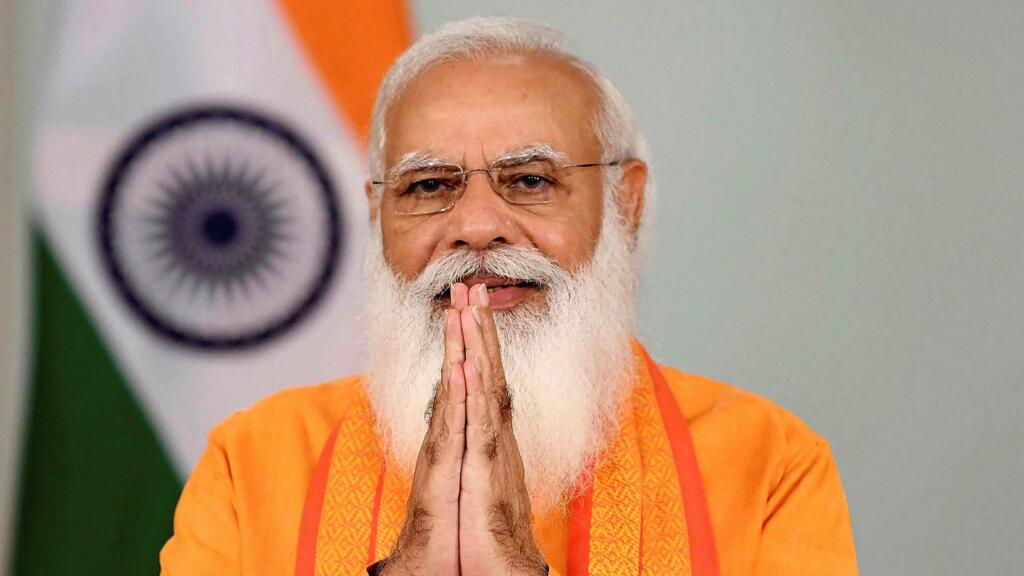India’s Prime Minister Narendra Modi turns 71 today and if one wanted to understand the change he has brought in during his regime in the last seven years, should simply switch tabs and go to the CoWIN dashboard. At the time of publishing the article, India had clocked over 2.5 crore vaccines in a single day with the counter still ticking along briskly.
A country that earlier had to rely on foreign, so-called ‘developed nations’ for vaccines, years after they were developed, is now vaccinating an entire New Zealand and Australia in a single day. While the doomsayers of the current regime will find their reasonings to belittle the achievement by talking about percentages and absolute numbers, a rational mind would like to unearth how did we manage to achieve the unthinkable.
PM Modi – a visionary
While India’s vaccine success story is only a single ‘microcosmic’ facet of Modi’s development outlook, a close look at his work over the years presents that he is a leader who is self-assured within himself and his work that he is never unsure about the future.
It started with the Jan Dhan Bank accounts where the incentive was clear to the layman – simply open a bank account without depositing a penny and become part of the banking revolution. There was no compulsion to deposit a single penny but PM Modi understood that Indians by habit are likely to save and deposit money, even if it is a tiny fraction of their income.
Read more: Modi 2.0: Clearly the best government in Independent India as far as economic outlook is concerned
After the bank accounts were opened and the poor populace connected to the banking system, he cleverly connected them to the Direct Benefit Transfer (DBT) scheme. Earlier, as eloquently put by former Prime Minister Rajeev Gandhi, only 15 paise of every rupee meant for the welfare of the downtrodden reached the poor. However, under PM Modi’s tenure, not a single penny is lost in corruption.
Digital India – a dream turned to reality
The country is digitally connected now, and we have pioneered the digital payment sphere to such an extent that developed nations like Singapore are collaborating with India’s revolutionarily UPI system. In 2020, the transaction volume share in India stood at 15.6% and 22.9% for instant payments and other electronic payments respectively.
And while we have ushered in an era of digital India, the telecom sector of the country, still reeling from the corruption of the UPA era is now being resuscitated back to life. Reported by TFI, the Modi government has stepped in with some big bang telecom reforms which are all set to provide much-needed oxygen for the telecom sector.
By far, the most important reform which the Modi government has announced is the redefinition of the term adjusted gross revenue (AGR). Until now, the telecom service providers were required to pay AGR dues to the government which included non-telecom revenue.
Moreover, 100% FDI in the telecom sector, with all necessary checks and balances, will provide an entirely new opening for telecom providers to expand and build upon their existing networks.
Read more: PM Modi unveils the most revolutionary telecom reform ever
Modi government 2.0- faster, ruthless, and efficient
However, lately, there has been a change in the way the Modi government makes decisions. While earlier the schemes and decisions implemented used to take the conventional route of being announced in the public with the feedback loop generating the response. It used to be quite time-consuming.
Narendra Modi in his second innings as the Prime Minister is dishing out important welfare decisions at breakneck speed. Take recent examples like abolishing the highly delusional UPA era retrospective tax regime to introducing Production Linked Incentive (PLI) schemes for 10 of the most vital sectors of the economy to bringing ‘Real Estate Regulation and Development Act’ to amending Insolvency and Bankruptcy Code – there has been no dearth of administrative reforms.
Even the announcement of the name change of Rajiv Gandhi Khel Ratna Award to Major Dhyan Chand Award came through an innocuous-looking tweet that sent the entire left-liberal machinery into a hyperventilating mode. Simply put, PM Modi is on a spree and it’s not careless or driven by populist demands; he understands that there is so much to do, so much to undone that even another term might not be enough.
I have been getting many requests from citizens across India to name the Khel Ratna Award after Major Dhyan Chand. I thank them for their views.
Respecting their sentiment, the Khel Ratna Award will hereby be called the Major Dhyan Chand Khel Ratna Award!
Jai Hind! pic.twitter.com/zbStlMNHdq
— Narendra Modi (@narendramodi) August 6, 2021
Moreover, other leaders like Atal Bihari Vajpayee or even Manmohan Singh never had the numbers to make decisions for the greater good of the public. While Vajpayee Ji strung a government at the peak of coalition politics, Manmohan Singh was a mere pawn during his two terms with the actual string being pulled by the Gandhi high command sitting in 24, Akbar Road.
Abrogating Article 370, abolishing Triple talaq, challenging China, constructing Ram Mandir – no one in the entire political and journalistic class of the country could have imagined it happening in a pre-Modi era. However, the man from Gujarat, rising through the ranks from humble beginnings, dared to look beyond the ordinary. And for his ‘well wishers’ from the opposite end of the political spectrum, the bad news is that he has only just begun.
